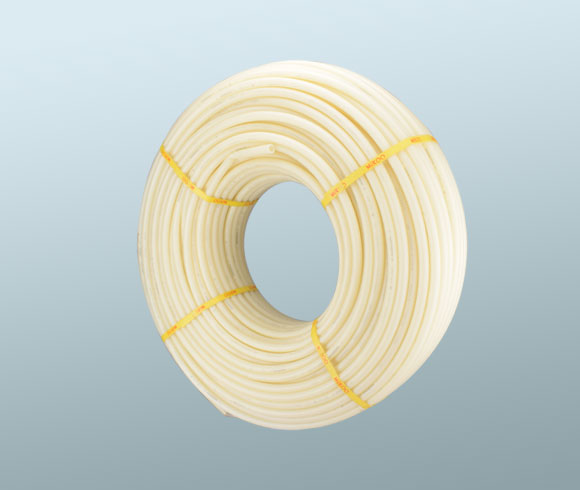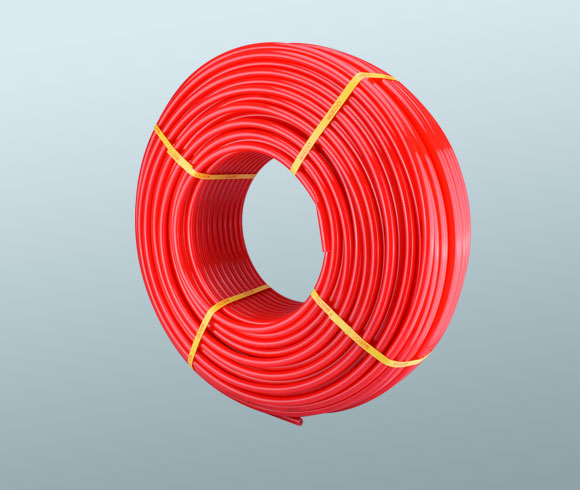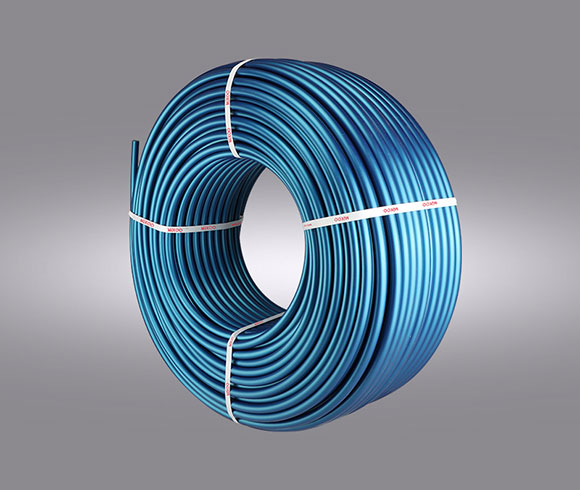
Current Position:Jilin Mekoo Pipe systems co;LTD.>News>New>Adapting Measures to Local Conditions to Warm Through Winter——A Survey of Heating from Some Cities in the South
Release Time:2020-08-17 09:35:56 Views:times
Xinhua News Agency, Beijing, November 12th. Title: Adapting Measures to Local Conditions to Warm Through Winter——A Survey of Heating from Some Cities in the South
Xinhua News Agency reporters Wang Youling, Wei Yukun, Cheng Shihua
As some cities in the north have begun to centralize heating one after another, the reporter found that in order to allow southerners to have heating in winter, some cities are exploring ways to adapt to local conditions.
Heating in some southern cities is in action
"For a house of more than 80 square meters, the heating fee is more than 1,700 yuan in 3 months, which is more comfortable than the air conditioner. The air conditioner is too dry for heating, and it will be so cold when you leave the room." Speaking of the benefits of heating, I live in Hefei City Han Yonghong of Luyang District opened the chatterbox. In the Hupanjiayuan community where she is located, only 300 households had heating in 2008, but now it has increased to 700 households.
Hefei is located to the south of the Huaihe River and north of the Yangtze River. It does not belong to my country's traditional central heating area. However, in recent years, with the improvement of people's living standards, the number of residential districts in Hefei with central heating has increased significantly.
According to Wang Lei, director of the Municipal Public Management Division of the Hefei Urban and Rural Construction Bureau, the Hefei Thermal Power Group currently has the highest proportion of cogeneration heating. This part of the heating is mainly cleaned by coal, covering 115,000 residents, followed by scattered natural gas wall hangings. Furnace heating, and new energy sources such as ground source heat pumps.
In the middle of my country's territory, the "Qinling-Huaihe River" stretches more than 2,000 kilometers across from east to west, dividing north and south. To the south of this line, orange groves are still green in winter; north of this line, trees tend to wither in late autumn. At present, my country is bounded by "Qinling-Huaihe River", and the northern area is a central heating area.
Xin Rong, deputy chief engineer of the Shaanxi Urban and Rural Planning and Design Institute, said that according to current regulations, my country’s heating areas generally refer to the northern, northeastern, and northwestern regions where the monthly average temperature is less than or equal to 5 degrees Celsius for more than 90 days in the year. Belongs to the heating area.
“In the south, there is a lot of rain in winter and the air humidity is high. The indoor temperature is often as low as 10 degrees Celsius. In the event of snow, the temperature is often as low as zero degrees Celsius. The cold is difficult.” She said that as people’s living standards improve, the people in the south are The demand for heating is becoming more and more obvious, and more and more southern cities are actively working hard to respond to the voice of the people.
face the three major "difficulties" directly
The reporter visited and researched and found that some southern cities are exploring measures tailored to local conditions to provide heating for the common people: Hangzhou, Zhejiang, launched a natural gas household heating service in March 2017. Users can freely set the heating time and temperature, and the heat can be measured separately. ;Jiangsu Yangzhou has increased the construction of heating pipe network, and several communities such as the Phoenix Waterfront in the Slender West Lake Scenic Area will realize centralized heating...
In Binhu New District, Hefei, a multi-energy complementary regional energy project with an energy supply area of 5 million square meters is under construction. Gao Yongjun, deputy general manager of Hefei Thermal Power Group, introduced that the project adopts multi-energy complementary energy utilization methods such as ground source heat pumps and sewage source heat pumps. It is green and environmentally friendly and has a longer service life, which will help ease the pressure on urban energy supply.
Many interviewed experts said that southern heating cannot copy the central heating method of northern cities. It must fully integrate the southern region's climatic characteristics, resource endowments, building characteristics and other factors to adapt to local conditions and conduct flexible exploration.
Xin Rong said that the main difficulties that need to be solved in the southern heating system are economic feasibility, energy security and building energy consumption. Southern heating has the characteristics of short heating period, small heat load, and large load fluctuations. The large-scale implementation of heating will cause greater economic pressure on local governments. In addition, buildings in southern cities have not considered heat preservation and energy saving, and heating buildings consume large amounts of energy.
“There are relatively large regional differences in the South. In view of the heating problem, it is necessary to adapt measures to local conditions and adopt a more scientific, reasonable and flexible way to solve the winter heating problem in the South.” said Xie Yingxia, former vice president of the China Academy of Urban Planning and Design.
Pay attention to science, rationality and flexibility, the key lies in adjusting measures to local conditions
The key to allowing the people in the South to survive the winter warmly lies in adapting measures to local conditions and using scientific, reasonable and flexible methods.
Xie Yingxia said that the southern city buildings did not consider heat preservation and energy conservation. The heating buildings consume large amounts of energy, and large-scale heating is implemented, which costs a lot; while the temperature difference between indoor and outdoor temperatures in the south is smaller than that in the north, and the heating demand between residents varies greatly, so it is more suitable for decentralized heating. .
She said that in the communities in areas where urban populations are concentrated, it is possible to explore centralized and unified heating. But for some districts that cannot be reached by municipal central heating pipelines, distributed energy central heating is more suitable.
Many experts said that cities in need and conditions can use market leverage to "lever" central heating.
“Central heating should be carried out in local areas where conditions are available and demand is strong.” Fang Zhen, vice chairman of the China Urban Heating Association and chairman of Hefei Thermal Power Group, suggested that the steam produced by thermal power plants has a large amount of surplus after it is used for power generation. The district considers using these heat energy to implement central heating, so that the energy efficiency of thermal power plants will also be greatly improved.
Fang Zhen said that Hefei’s central heating is characterized by the development of combined heat and power and central heating, which not only covers central heating for urban residents, but also extensively involves urban industrial and commercial use of steam, avoiding resource waste caused by short heating periods.
Experts believe that from the current exploration and practice in some cities, southern central heating is technically mature, but it still needs to be demonstrated and arranged according to local economic and energy conditions. At the same time, southern cities are encouraged to explore various heating modes that are more energy-efficient and environmentally friendly in line with local climatic conditions, so that the people in the south can warm through the winter.

The electron beam radiation cross-linked polyethylene (PE-Xc) tube uses high-energy rays to excite polyethylene molecules to generate free radicals, which combine to generate intermolecular cross-linked bonds, forming a cross-linked structure of polyethylene molecules.

Modification of HDPE by physical method, the formation of cross-linked polyethylene and three-dimensional network structure.In the electron beam irradiation source intensity under certain circumstances, for a certain limit complete modification.

High oxygen barrier type PE-Xc pipe through multi-layer coextrusion technology, the formation of EVOH oxygen barrier layer is uniform in the external pipe.

Meigao PE-Xc tube adopts the first domestic co-extrusion irradiation technology to co-extrude the visible light barrier layer and the ultraviolet absorption layer into the tube.1、It can prevent sunlight transmission from oxidizing the water quality, and then avoid the production of bacteria and algae growth that will seriously affect water quality, pipeline transportation and other problems;2、It can prevent the pipes from being exposed to ultraviolet rays in the atmosphere to cause aging, so as to further i
Jilin Meigao Piping System Co., Ltd. originated from the Changchun Institute of Applied Chemistry, Chinese Academy of Sciences. It is a high-tech enterprise integrating R&D, production and sales of pipeline products and accessories. The company mainly produces electron beam irradiation cross-linked PE-Xc Pipes, heat-resistant polyethylene PE-RT pipes, PP-R pipes, pipe fittings, complete specifications.